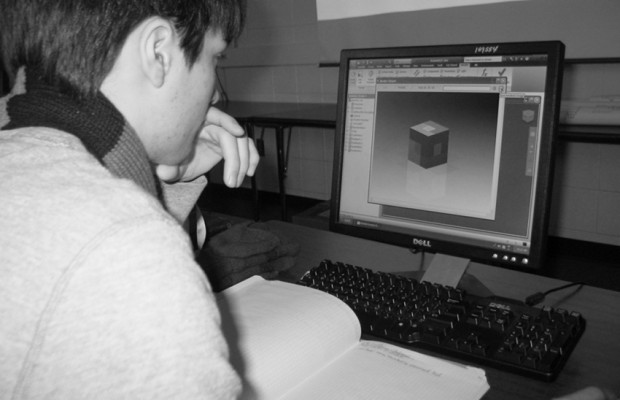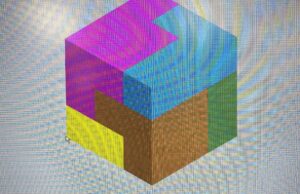New course integrates multiple disciplines

Intro to Engineering, a new addition to course options last year, is the first in a series of engineering courses that will be offered at Cedar Falls High School. In just its first year, the popular course has over 50 students enrolled in three different sections.
“What the course is doing is taking concepts being taught in current math, science and industrial technology curriculum and blending them together — and what you’re seeing is the practical application side,” said Dirk Homewood, one of the Intro to Engineering teachers (the other is Linda Sneed). “You’re seeing why you’re learning the quadratic formula, what it actually translates into.”
The course covers the design process, advanced modeling skills, reverse engineering and inventing. Students draw and model designs that replicate machines such as trains on
computer software. They also take apart technology, and as a final project, they create their own inventions or innovations.
“It’s definitely not like your traditional class,” senior Brian Harris said. “It’s very hands on. There’s no big text books, and you’re not sitting around just taking notes.”
Instead, the course uses a technology program called Inventor that allows students to model, create and manipulate 3D objects.
“It’s pretty powerful software. You can not only draw stuff, you can make animations of parts coming together and coming apart, change the textures, etc. It’s very versatile,” Harris said.
Because much of what is done in class requires use of the software, there is little homework; however, that is not to say the course isn’t challenging.
“It challenges [students] in a different way,” Homewood said. “It trains your mind to think differently and see things in a new perspective — to think in a way you’ve never thought before.”
The curriculum is provided by the Project Lead the Way foundation, a group that promotes engineering education by offering curriculum for a four-year high school engineering program.
“It’s only an introductory course, but, still, it addresses a ton. You learn so much about what engineering is actually about, and it’s a lot different than what I thought,” senior Blake Cervetti said.
Students can also use their coursework to open doors to potential universities or employers because they assemble their projects into E-portfolios highlighting their new abilities.
Homewood said he expects at least four sections of Intro to Engineering for next year, and Principals of Engineering, the second course in PLTW’s four-part strand, will be offered as well. The other two courses in the strand, Digital Electronics and Civil Engineering and Architecture, will be added in the next few years.
All are dual credit courses; students can earn college credit that transfers to any of the three major state universities by passing an end of year test. Only a prerequisite of algebra I is required for Intro to Engineering, so students one year up in math will have the opportunity to take all the courses by the time they graduate.
“ISU engineering school (for example) is a very competitive program. They really try to weed out so they have the best of the best. Our hope with this program is that we will be able to give our students a leg up, “ Homewood said.









You must be logged in to post a comment Login